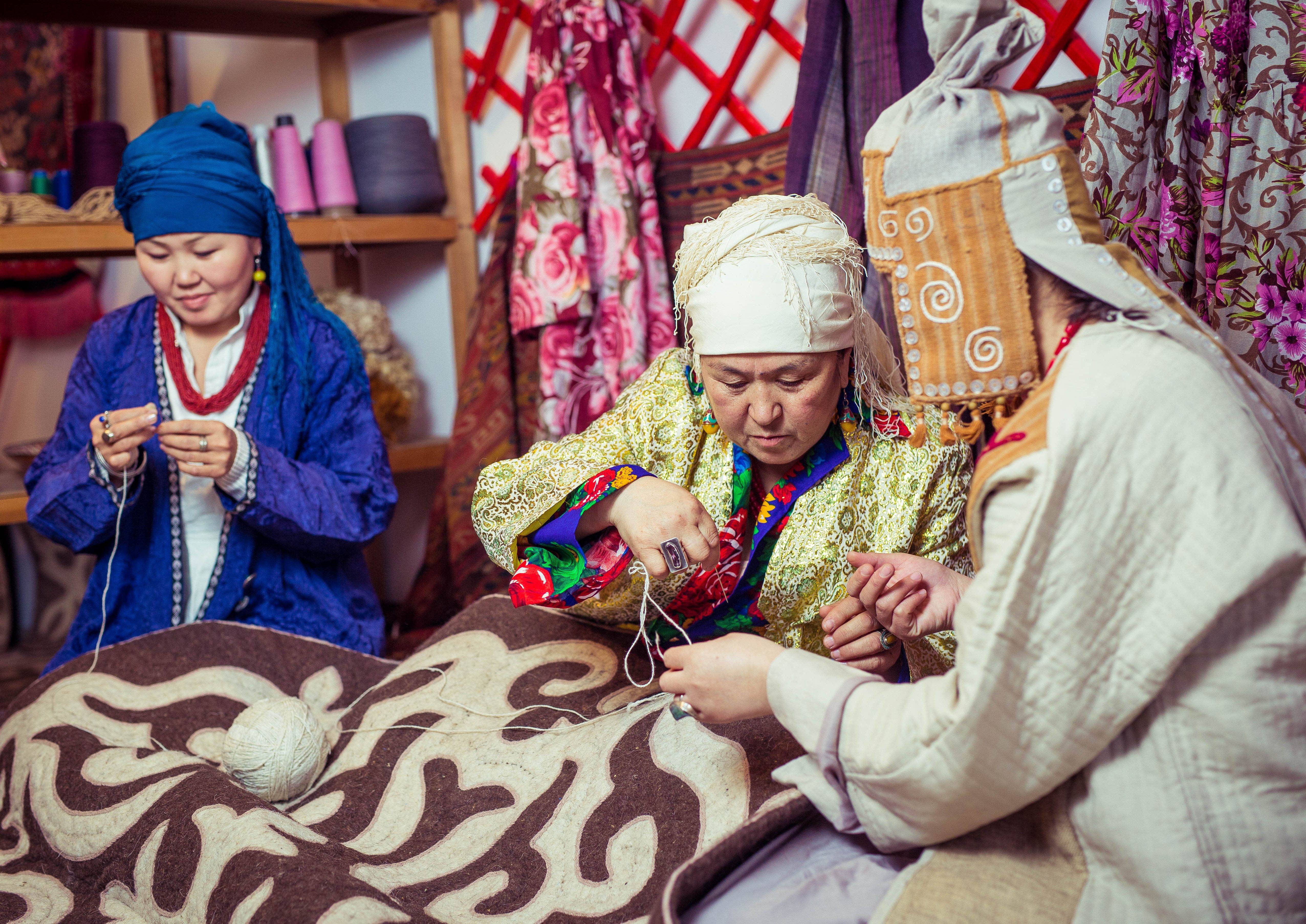
THE AWARD
On 27 September, to mark World Tourism Day 2022, the Green Destinations Platform unveiled the new 2022 Green Destinations Top 100 Stories – a list of 100 excellent initiatives for sustainable destination development from all around the globe. Kyrgyzstan was represented in this event by Destination Karakol, Destination Osh, the Kyrgyz Community-Based Tourism Association, the Swiss Bai Alai Project, the Swiss Sustainable Winter Tourism Development Project and the EU funded SWITCH-Asia GreenTour: Promoting Sustainable Tourism in Kyrgyzstan Project which initiated participation of the above organisations in the Green Destinations’ Annual Conference. Implemented by Helvetas Intercooperation gGmbH and its partners, GreenTour responds to the objectives of the Kyrgyz government to advance a greener and more sustainable tourism in Kyrgyzstan, involving communities, and diversifying tourism products in order to attract new target groups and clients.
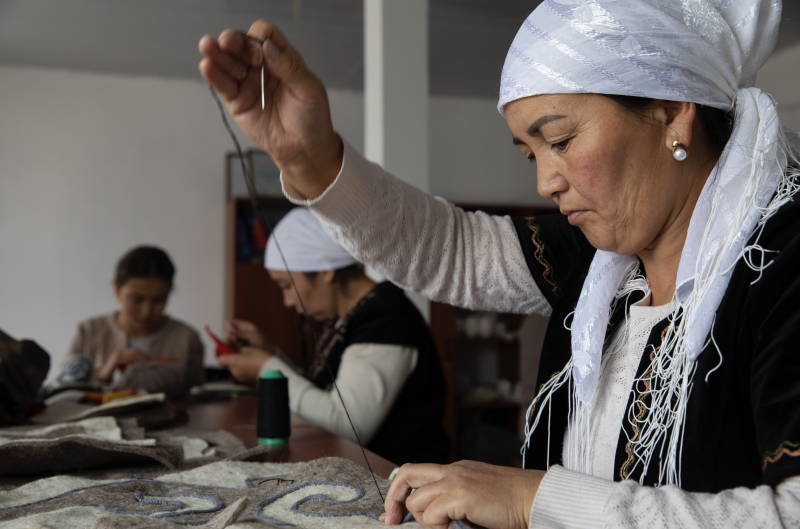
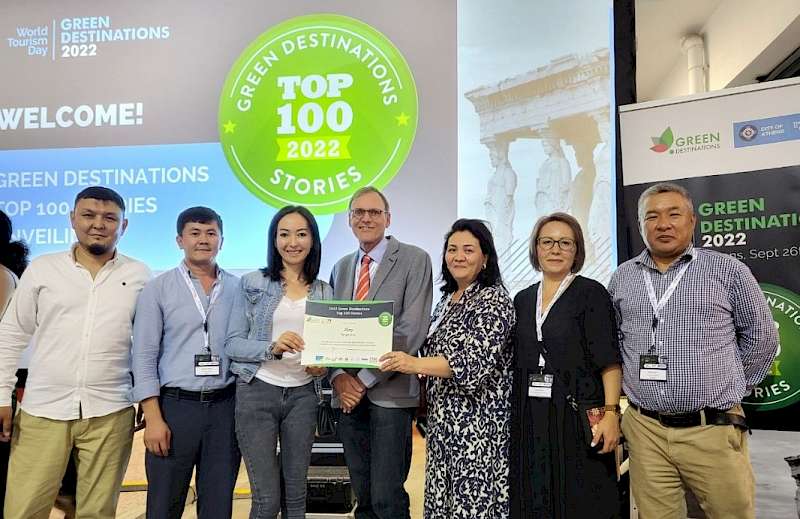
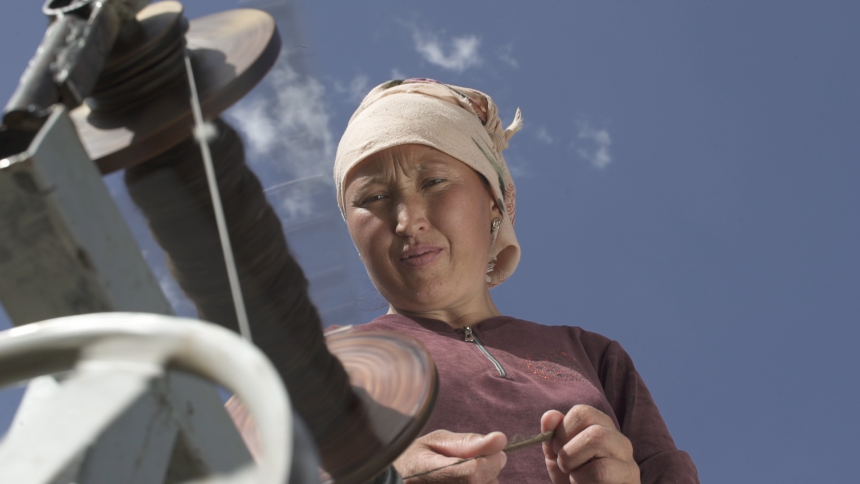
OUR STORY
Alay is a region in the Osh province located in the south-west of Kyrgyzstan. The region borders with China to the east and Tajikistan to the south. The area of Alay region is 6821 km2 and the population is 91,876. The landscape is mountainous (altitude varies from 1560 to 5000 m) with alpine lakes and peaks. The climate is continental, cold and windy winters last for 4-6 months. Traditionally, the main forms of livelihood are based on livestock farming, hay making and primarily rain-fed agriculture. Cultivation of potato, barley and wheat provides only small surplus yields for selling in the local markets. Selling dairy and livestock products is the main sources of income. Poverty has been widespread in Alay and as reported by the region’s statistics department, the cumulative percentage of poor and very poor was 54% in 2017.
Employment opportunities have been limited and the most common livelihood strategy is to rely on the available natural resources as the main asset. The economy was largely subsistence-oriented and selling crops, legumes, fruits and livestock to local markets provided money to purchase clothing and additional foodstuff for families. Substantial support to the households has been fueled by remittances from family members working in urban centers of Kyrgyzstan, Kazakhstan and Russia. Every third family in this area has been dependent on remittances from abroad. However, in light of the recent crisis and political situation in Russia, this source has also become unstable as many labor migrants have either lost their jobs or returned home. To reduce the impact of these issues, alternative sources of income and poverty reduction measures were urgently needed to diversify the economy and protect lands from degradation resulting from intensive use.
Being located in the mountainous valleys, Alay is a unique region with high potential of tourism development. Lenin Peak (7134 m) is the region’s tourism hotspot which has been attracting alpinists from all over the world since the Soviet times. Other tourist attractions are: Sary Oi Valley, mountain lakes, peaks, pasture and international Pamir Alay highway (M 41). The population considers tourism as a good tool to diversify and foster the local economy by creating additional income sources and purchasing power for local products.
The road which became the international M41 highway in the modern days was once a branch of the Great Silk Route – a major trading line of 7 thousand kilometers which stretched for fifteen centuries from the capital of Far Eastern China to the capital of Roman Empire. The story of the great historic route which witnessed the birth and death of entire civilizations represents another tourist attraction of Alay.
Besides the Silk Road story, tourism of Alai is about trekking, mountaineering and experiencing the nomadic culture of the Kyrgyz people. Staying in a yurt, the nomadic home is an experience which more and more travelers are interested in trying. The road is picturesque with mountains of different color, breath-taking passes and unique flora and fauna to observe along your route.
Being a region of animal husbandry, the region produces a lot of wool and traditionally, women would be busy with hand-weaving, felt-making, sewing, patchwork (kurak) and knitting during the long winters. Yet, these skills were seen as a leisure and hobby rather than an income-generating activity. The handicraft products would be used by the family and not promoted for sales. Young women and girls were not actively involved in the traditional handicrafts as this was not seen as an income-generating or interesting occupation. Overall, traditional handicrafts were disappearing with aging women and lack of interest.Tourism and handicrafts are very much interconnected; however, the functional and efficient links that would bring benefits for the community were missing in Alay.
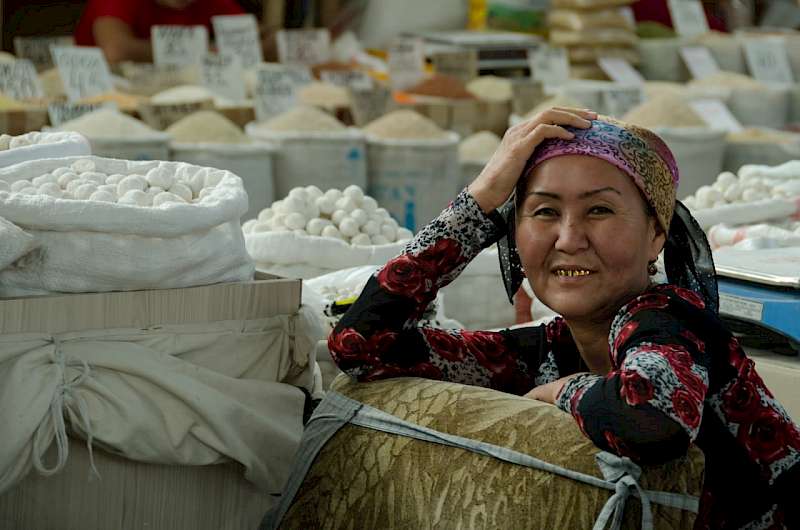
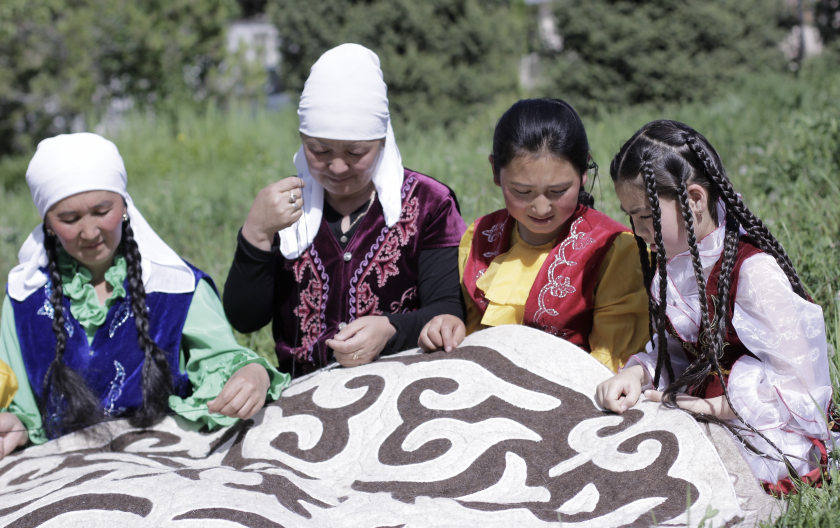
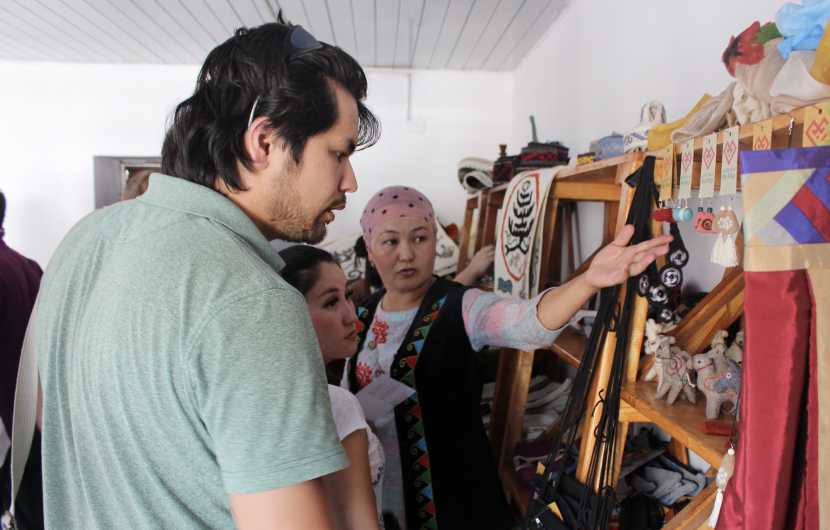
THE TURNING POINT FOR LOCAL ENTREPRENEURS
In 2007 the community has come together to establish a Community-Based Tourism organization of Alay (CBT Alay) to develop the first tour products (nature-based and adventure experiences) and attract visitors to the region.
In 2017, in consultation with the community, the region’s and oblast’s leadership, The Swiss Small Business and Income Creation Programme Bai Alai and the umbrella Kyrgyz CBT Association, CBT Alay developed a tourism development strategy for 10 years outlining the key tourism development areas, SWOT analysis and an action plan. The strategy is in line with the national sustainable development agenda of the Kyrgyz Republic. As one of its development targets CBT Alay chose support to local women artisans to revive the handicraft traditions of our region and then promote them to tourists. The proactive work with handicrafts producers started in 2018.
In parallel, the Business Women of Alay Public Union established by 10 women entrepreneurs in 2014, with a mission to support women in access to business information, know-how, and improving professional skills, chose handicrafts to be the key business development area in 2017.
Motivated by the example of their peers at CBT Alay, BWA started to actively cooperate with the region’s administration and the Bai Alai Program. The latter provided financial, technical and organizational support to build the capacity of the young association.
BWA has been working on a wide range of topics:
- Product development and packaging;
- Integration of handicrafts into the tourism value chain;
- Marketing and promotion;
- Quality improvement;
- Skill development;
- Mentorship by experienced artisans to young women;
- Training of trainers (TOT) program that ensured a broad-based coverage and sustainability of the efforts;
- Business model promotion.
BWA developed a unique with love by Alay brand which has been promoted since 2018 in cooperation with Bai Alai through facilitation of business networking, exposure to all national tourism and handicrafts fairs in Kyrgyzstan; regional and international fairs in Russia, Uzbekistan, Kazakhstan, Italy and Germany. Participation in the international handicrafts and tourism fairs helped launch exports to international markets. For instance:
Exports of hand-woven fabric made of organic cotton produced and certified in Kyrgyzstan to Germany
BWA received an order from Germany Folkdays (contemporary fair-trade design & fashion) through an Osh-based lead firm Nomad Store. Overall, 88 women-artisans are involved in fulfilling this order (i.e. making yarn from bio-cotton, coloring the yarn and weaving cotton fabric from hand-made cotton yarn). Women involved were able to earn income of $160 each in 2021 on average. The client has produced 1500 pairs of shoes from this fabric, started selling them in Berlin, Germany and online. Other than the shoes, bags and belts were produced and shipped to Germany. Their media campaign and sales have started April 2022. Half of the order has been completed and the buyer is currently collecting customers' feedback on the product. In August 2022, Folkdays will decide on the continuation of the order. In the end of July, 2022 Lisa Jaspers, CEO of Folkdays will be visiting Kyrgyzstan to consult Alay artisans on below topics:
- Entering the German market
- Strategic product development and pricing
- Product development for Folkdays & Wilding Shoes
- Fair Trade
Folkdays and Nomad store are interested in the growth of artisans and their sustainable entrepreneurship. The aim is to produce not only cotton yarn and cotton fabric in Alay but also to produce final products here such as scarves, shoes, among others.
BWA is actively partnering with tour operators, hotels, and shops to enhance promotion among domestic and international tourists through concluding cooperation agreements, active marketing and promotion. In addition to sales of products, this initiative resulted in development of the new tourism experiences: master classes for tourists to take part in felt-making and weaving, for example. These products were developed based on demand:
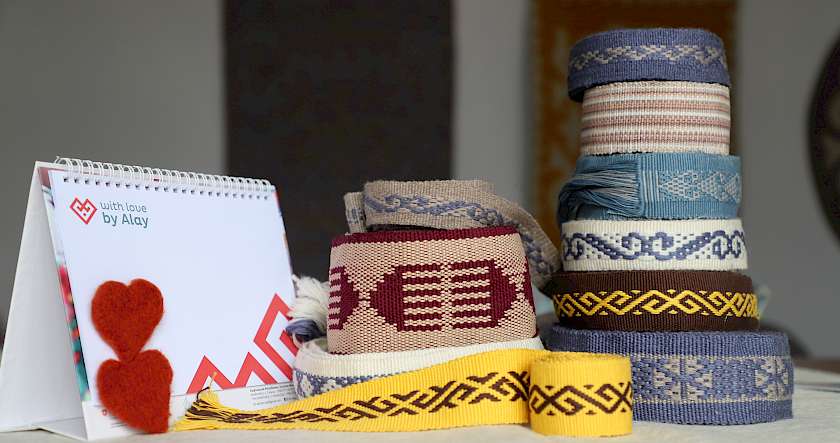 Master class on making traditional handicraft products (small felt and woven rugs, bracelets and belts from taar, small shopping bags). When a tour company places an order, BWA clarifies the details with the customer on what product exactly should a master class be about, how much time will the customer’s tourist have on spot. Depending on the details, BWA sets the price. Then, BWA organizes the product by preparing raw materials and the place. BWA appoints an experienced artisan to show and guide tourists on the process. Hence, when the experience takes place, tourists learn the techniques, story behind each technique, patterns and prepare their own souvenir to take back. On average, such master classes last from 2 to 4 hours. The number of women-artisans involved in these master classes can range between 3-10 depending on the number of tourists. As it is a process where tourists make a handicraft product, time to time they need some support from artisans. On average, the price per person for such product was between 35-60$ per person and average income of involved women from providing this product in 2019 was between $80-150.
Master class on making traditional handicraft products (small felt and woven rugs, bracelets and belts from taar, small shopping bags). When a tour company places an order, BWA clarifies the details with the customer on what product exactly should a master class be about, how much time will the customer’s tourist have on spot. Depending on the details, BWA sets the price. Then, BWA organizes the product by preparing raw materials and the place. BWA appoints an experienced artisan to show and guide tourists on the process. Hence, when the experience takes place, tourists learn the techniques, story behind each technique, patterns and prepare their own souvenir to take back. On average, such master classes last from 2 to 4 hours. The number of women-artisans involved in these master classes can range between 3-10 depending on the number of tourists. As it is a process where tourists make a handicraft product, time to time they need some support from artisans. On average, the price per person for such product was between 35-60$ per person and average income of involved women from providing this product in 2019 was between $80-150.
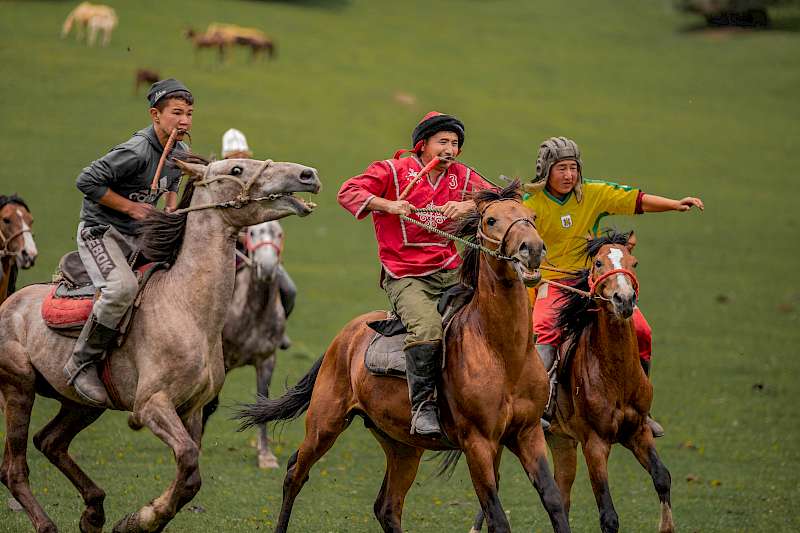 Showcase on making traditional handicraft products (small felt and woven rugs, bracelets and belts from taar, small shopping bags). This experience is oriented for tourist groups who have less time or do not want to do handicraft on their own. The guests can see how one or several traditional handicraft products are made first hand and learn the story behind each product. Usually, such shows take 1-2 hours and the number of participants ranges from 4 to 8 women artisans depending on the size of tourist groups. This product is available at two locations in Alay: Gulcho and Sary-Mogol villages. It can also be organized in other locations upon request. The price for such product varies between $20-40 per participant and average income of each involved person in 2019 was in the range of $50-80.
Showcase on making traditional handicraft products (small felt and woven rugs, bracelets and belts from taar, small shopping bags). This experience is oriented for tourist groups who have less time or do not want to do handicraft on their own. The guests can see how one or several traditional handicraft products are made first hand and learn the story behind each product. Usually, such shows take 1-2 hours and the number of participants ranges from 4 to 8 women artisans depending on the size of tourist groups. This product is available at two locations in Alay: Gulcho and Sary-Mogol villages. It can also be organized in other locations upon request. The price for such product varies between $20-40 per participant and average income of each involved person in 2019 was in the range of $50-80.
Demonstration of Kyrgyz Traditions and traditional games such as Kyz Uzatuu (bridal wedding), cradling the baby (tourists gets to see a traditional cradle and arrangements for putting a baby in a cradle; and, rope-pulling (“Arkan Tartish”), wrestling on horses (er enish), Kok-Boru, riding a yak and other. Such shows last from 2 to 4 hours and a number of locals involved can range from 2 to 8 people. There are two guest houses in the Sary-Mogol village which provide this product. These same guest houses organise these shows in Tulpar Kol lake area near Lenin peak base camp upon request. The price for such product varies between $15-30 and the income of involved people varies between $80-200 per person during the season.
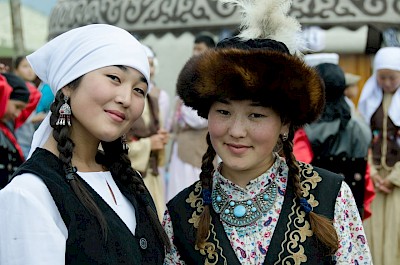 BWA is actively partnering with tour operators, hotels, and shops to enhance promotion among domestic and international tourists through concluding cooperation agreements, active marketing and promotion. In addition to sales of products, this initiative resulted in development of the new tourism experiences: master classes for tourists to take part in felt-making and weaving, for example.
BWA is actively partnering with tour operators, hotels, and shops to enhance promotion among domestic and international tourists through concluding cooperation agreements, active marketing and promotion. In addition to sales of products, this initiative resulted in development of the new tourism experiences: master classes for tourists to take part in felt-making and weaving, for example.
To empower women artisans and strengthen their participation in income-generation, a GALS approach (Gender action learning system) was used in the destination through family trainings and coaching. The total of 89 families took part in GALS training, which then was followed with monitoring visits after 2-3 months to check whether they have been sensitized or started using some of the tools provided in the trainings.
To ensure a participatory approach, the association conducts regular meetings to update members on its activities and achievements. Aside from its direct mission, the association serves as a place for women to gather, exchange news, socialize and unwind from their daily routine.
THE KEY TO SUCCESS
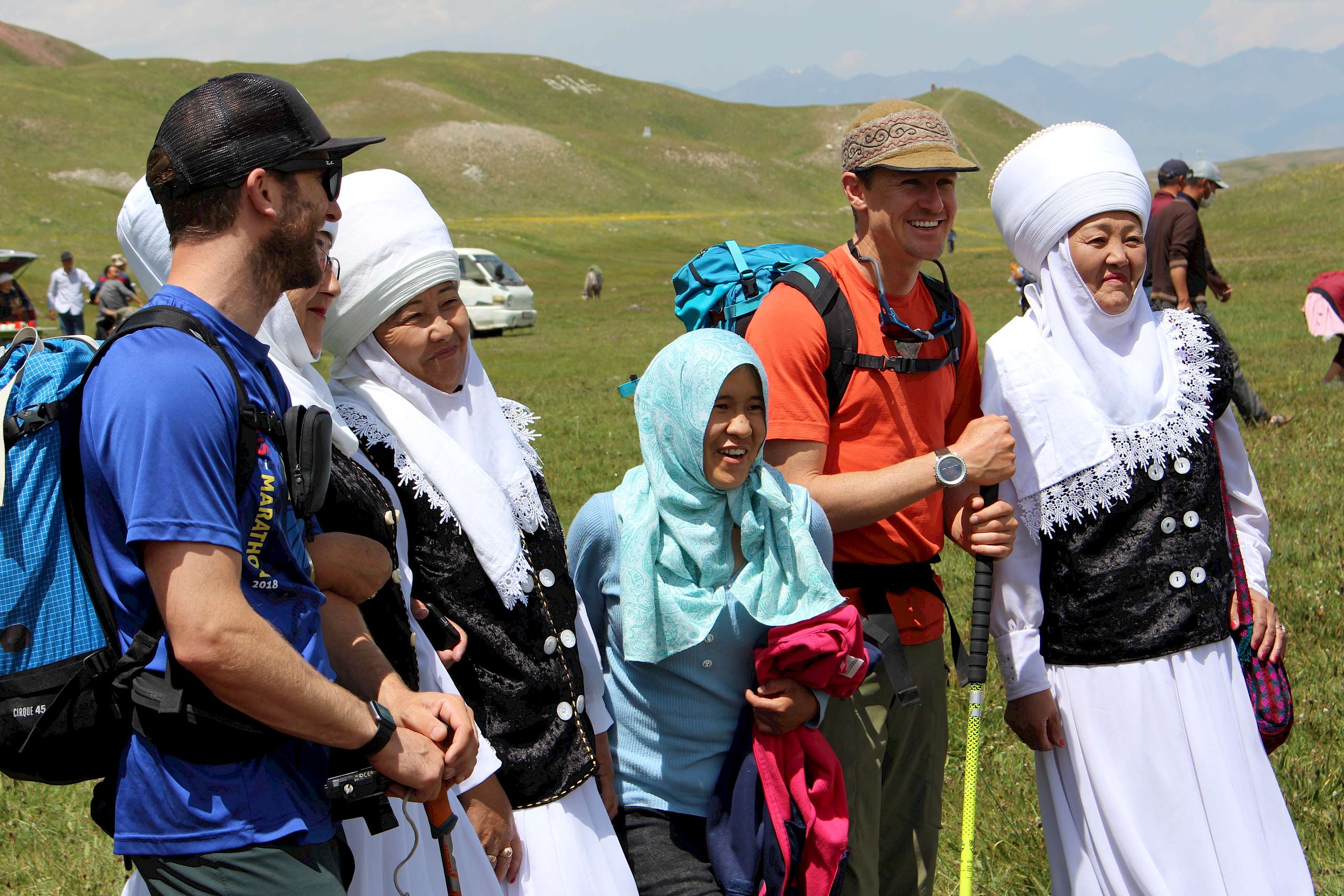
The decisive approach by key stakeholders, including CBT Alay, Bai Alai, and the municipality to support women artisans and expose them to working with tourists resulted in boosting the interest from the tourism sector in products, they did not see value in before.
Selection of handicrafts promotion by CBT Alay – the key tourism sector player, served as a solid foundation for success. All in all, the total number of such activities held in the indicated period has reached 42, while the total number of participants of such capacity building activities have reached 534.
A total of 42 workshops and trainings covering 534 beneficiaries (of which 198 are in tourist service providers such as guest house, yurt camp operators, tour guides, while the rest are women artisans) helped improving the business skills, craft-making techniques and marketing. Out of 534 more than 80% are women and 30% are youth. The important success factor relates to the strong commitment and willingness of the communities including women artisans to learn and acquire business skills and then promote their produce to tourists.
Overall, Bai Alai provided USD 220 thousand for facilitation of women artisans’ access to markets, their business skills development and integration of handicrafts into the tourism value chain. To ensure sustainability and avoid full reliance on external assistance, BWA has applied the co-financing approach from the very beginning, i.e. women artisans cost-share most of the initiatives by contributing 10 to 50%.
Another important success factor was engaging the experienced members in training and mentoring the new-comers. In addition to guidance and mentorship, the new-comers have access to small loans for starting their business.
BWA works on all levels of partnerships covering local producers, public authorities, tour companies, tourism associations and tourists. Working with tourists is not only about selling handicraft shows and souvenirs, it has an important cultural exchange aspect as well. The rural women do not get to travel abroad and socializing with tourists is a way of being exposed to other cultures and countries.
The support of the local municipalities and the region’s leadership in addressing the legal barriers, disseminating information and general coordination with government bodies at the regional and national level was crucial to achieving and maintaining the results.
Another success factor relates to intensified collaboration with the Kyrgyz and foreign tour operators, large buyers, handicrafts and tourism associations. BWA’s strong role has been in quality assurance, understanding of women producers’ needs and challenges, preservation of handicraft-making skills through tourism, connecting women artisans with the tourism sector, and driving the mindset change among women artisans.
It has been particularly important that BWA applied a specialised group approach with the women producers where each group was focusing on a particular product type to ensure quality, efficiency and performance. Both the leadership and members of BWA were quick and persistent in learning new concepts about tourism, marketing and business promotion.
Lessons Learnt
Challenge 1
Tourism of Alay was by large perceived as mountaineering, trekking and sightseeing. The cultural component was most of the times missing and the experiential offerings were rarely if not ever included in the tourism packages. Guests of the regions were deprived of immersing in the rich culture of the Kyrgyz traditions of wool processing, patchworking embroidery and other crafts. Women artisans were mostly involved in subsistence farming and deprived of generating income from engaging with tourists and tour operators.
Solution
Women were provided with an opportunity to develop skills and knowledge through attending numerous trainings. After gaining the knowledge and working on a stock of products, the artisans began selling their products at the tourism events and festivals of local, regional and national level. International bloggers supported by USAID BGI, Bai Alai and other partners came to Alay in 2017-2019 to improve the region’s representation in travel blogs with a special focus on sustainability and cultural experiences. Today, Alay women artisans make goods which are in demand by both the wholesale and retail customers from Kyrgyzstan and abroad. Alay appears on blogs, reviews and publications. Popular travel TV shows and channels have covered Alay in the recent years.
Challenge 2
The cooperation between the value chain actors was missing, women were not aware of the business opportunities and did not see benefits in handicrafts promotion. The root cause laid in the lack of a uniting player and/or motivator.
Solution
The association of women entrepreneurs grew larger and chose handicrafts promotion and integration in tourism as one of the key development areas. BWA today works with 14 large buyers from Kyrgyzstan plus various online platforms. By alay brand has an active Instagram account with stories about the unique products and their owners.
Challenge 3
Majority of the women producers considered handicrafts to be a hobby or a secondary activity. Young women and girls did not see a benefit of engaging in handicrafts production. Moreover, the ethnic clothing and accessories were considered as something that only grandmas wear on national holidays and family events.
Solution
BWA members and partners went with workshops and guest lectures to high schools, youth clubs and community events to highlight the importance of preserving traditions of handicrafts, explaining the meaning of national ornaments and nomadic philosophy. Moreover, they talked about the opportunities to start working with the tourism sector and generate incomes.
Challenge 4
In rural areas of Kyrgyzstan women often face problems with engaging in the activities outside their household because of the traditional distribution of household responsibilities and perceived dominating power of males in the family.
Solution
To empower women artisans and strengthen their participation in income-generation, Bai Alai Program supported CBT Alay and BWA in implementing GALS (Gender action learning system) - a community-led empowerment methodology to promote more harmonious and violence-free relationships. The success of these trainings was in tailoring the training materials to local realities and needs. It was important to involv both spouses in trainings. One of the positive impact of women economic empowerment through building handicraft value chain and conducting GALS trainings is that change in the behavior and perception of men on some of the day-today home-chores.
Challenge 5
Lowering interest in the traditions of handicrafts entailed risks of the traditional dying and processing techniques being forgotten. Shepherds would burn or throw away sheep wool. This has an environmental impact.
Solution
BWA organised workshops and public awareness raising on the advantages of preserving the old techniques using natural dyes. Today artisans use natural dyes from locally-grown wild plants, roots and flowers which make their products healthy and sustainable. Marketing of environmentally responsible products generated an increase in sales, bringing economic benefits for the local farmers and shepherds. In addition to the numerous direct benefits, use of the natural inputs and dyes has become an interesting base for tour products in which locally grown plants or traditions of wool-cutting provide a story-telling content for guides and unique experiences for tourists.
Challenge 6
The lack of entrepreneurship skills and business attitude among rural women artisans was a barrier for making quick changes. Mindset shift and building skills require a gradual and patient approach.
Solution
Engaging young women proves to be more efficient. They were quick in learning and adaptation. Yet, the elderly women serve a great value as mentors and holders of traditional knowledge.
ACHIEVEMENTS, RECOGNITION AND PRIDE
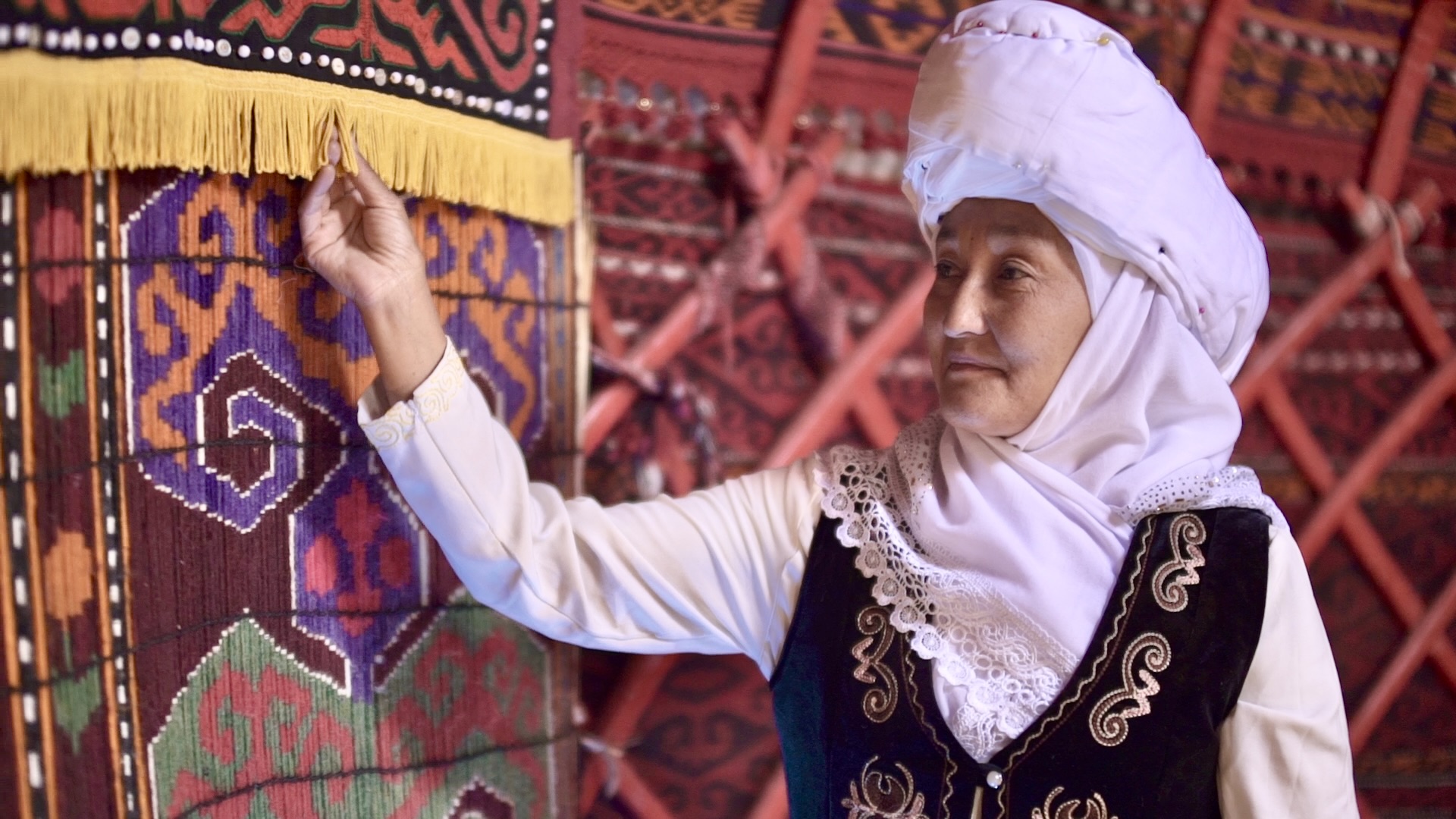
Handicrafts produced by Alay women are popular among domestic and foreign customers. The unique products of more than 10 categories were developed, packaged and promoted. Each category was through community workshops and trainings and includes a rich variety and subcategories. The Accessories Category, for example, comprises Christmas décor, key-chains, jewelry decorations, toys, cosmetic bags, purses, cases for telephones and eye-glasses. All accessories are made using various local materials: felt, patch-working, woven fabrics and wool.
Tourists enjoy not only the nature-based, but cultural experiences in Alay. Felt-making, patchworking and other offerings coupled with interaction with the local ladies enrich the tourists’ stay in the region and provide a good income generating source for women. The number of women engaged in the association and benefitting from its support and facilitation increased from 10 in 2014 to 324 in 2021. The age range of members is from 28 to 65 with an average age of 40. With the average family size of 4 in Alay, sustainable tourism activities provided benefits to around 1500 persons. Sales by BWA members have grown from literally zero to KGS 317 000 (USD 4000) in 2021.
The practice contributed to poverty reduction in Alay from 57 % in 2017 to 48 % in 2021. The women artisans of Alay have grown into demanded professionals to train peers in other regions. This is an additional income and a higher self- esteem of women who once were afraid of publicity. BWA has a financial and mentorship pool to help new members. Exporting is done to the following markets: Europe 39%; USA 29%; Russia 13%; Kazakhstan 11%; Japan 8 %.
The women artisans of Alay have grown into demanded professionals. They are often invited by other regions and projects as trainers for sharing knowledge and experience. This constitutes an additional income for the association members and raises self-confidence and esteem by women who once were afraid of publicity.
BWA has accumulated a pool of funds from which it provides inputs and materials for new members to start a business. The fund is growing in size along with the gradual association development and growing membership base. Today, there are around 20 master trainers of various categories available for the new-comers.
Alay products are promoted during all tourism events in Kyrgyzstan with careful considerations for sustainability. The annual Horse and Yak Game Festival is a major tourism event and women producers are active participants in this festival through organising fashion shows with traditional Kyrgyz clothing, engaging tourists in felt-making and other experiences. Through the active online and offline promotion on social media, fairs, product positioning and marketing, the ethnic hand-made products became trendy and in demnad among domestic and foreign tourists and buyers. Fashion is not just about western style outfits, but locally made clothing and accessories with ethnic elements. About 40% of sales of artisans' products are made through Instagram and Facebook pages and products have been promoted by influencers and bloggers. The average spending has increased from 15 to 50 USD/day. Total sales by CBT providers have grown from 110,475 in 2017 to 247,500 in 2021. Production of handicrafts and souvenirs contributed to increased revenues of the tourism sector.
The example of Business Women of Alay has been replicated in the neighboring Chon-Alay Region where the branch of BWA was opened recently. As a result of these empowering initiatives, the poverty rate has been declining through engagement of women and providing them with income-generating opportunities in the handicrafts and tourism sectors.
For more information contact:
Nargiza Kudaiberdieva
GreenTour Project Manager
Photo credits: Helvetas Intercooperation gGmbH


